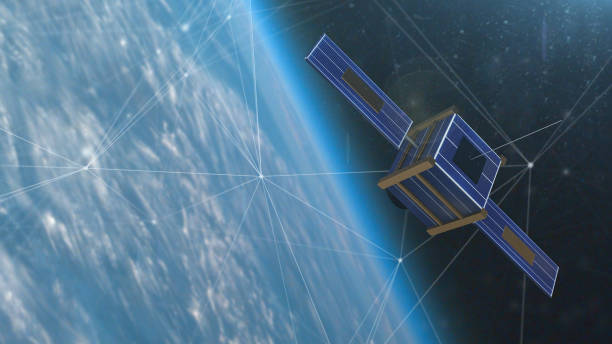In a world where technology evolves at an unprecedented pace, intelligence gathering has become more sophisticated, and satellites play a crucial role in this domain. Satellites provide unparalleled access to information, making them indispensable tools for security agencies, governments, and organizations worldwide. These advanced tools offer real-time insights and data, allowing for informed decision-making, early threat detection, and monitoring of global activities on a scale never before possible. In this article, we’ll explore the essential role of satellites in modern intelligence gathering, their impact on national security, and how they continue to shape our understanding of global threats.
Evolution of Intelligence Gathering with Satellites
In the early days, intelligence gathering relied heavily on human operatives, ground-based radar, and limited aerial reconnaissance. With the advent of satellite technology, the scope of intelligence gathering expanded drastically. Satellites with high-resolution imaging, radar, and other sensors now orbit the Earth, offering continuous surveillance over vast geographical areas.
These advancements have made it possible to observe changes in terrain, monitor suspicious activities, and gather detailed images of areas that would otherwise be inaccessible. Modern intelligence gathering leverages these capabilities for counterterrorism, disaster management, and environmental monitoring applications. Thanks to satellites, the global intelligence community can now operate with a level of precision and speed that was unimaginable even a few decades ago.
Types of Satellites Used in Intelligence Gathering
Different types of satellites serve various roles in intelligence gathering, each designed with specific capabilities that enhance security measures worldwide. Among these, the most widely used are:
-
Imaging Satellites: These satellites capture high-resolution images, allowing analysts to study everything from military installations to environmental changes. The clarity of these images has improved dramatically, making them invaluable for real-time surveillance and intelligence.
-
Signals Intelligence (SIGINT) Satellites: SIGINT satellites are equipped to intercept electronic communications, helping governments track signals from specific regions and identify potential threats. This type of intelligence is crucial in intercepting data from suspect sources and decoding sensitive transmissions.
-
Radar Satellites: Using synthetic aperture radar (SAR), these satellites can capture images day or night and through any weather. SAR technology is especially useful for tracking movements in restricted or obscured regions.
-
Communications Satellites: These satellites provide secure communication channels for intelligence agencies and military operations, ensuring the uninterrupted flow of critical information during sensitive operations.
Each satellite type adds a unique layer to the intelligence-gathering process, making it possible to cross-reference data and build a comprehensive picture of potential threats.
Real-Time Data and Decision-Making
The ability to collect real-time data is a game-changer in intelligence gathering, and satellites are at the forefront of this development. When a crisis emerges, intelligence agencies can monitor the situation minute-by-minute, enabling swift responses to rapidly changing circumstances. For example, during a natural disaster or a geopolitical conflict, satellite intelligence can provide updated maps of affected areas, track movements, and even pinpoint the location of critical resources.
This real-time data becomes critical for decision-making processes, particularly in high-stakes situations where immediate action is required. Through accurate, up-to-date intelligence, agencies can implement strategies to protect national interests, allocate resources efficiently, and anticipate adversarial moves.
Satellites and Geospatial Intelligence (GEOINT)
Geospatial Intelligence, or GEOINT, is a subset of intelligence gathering that combines satellite imagery, mapping data, and analytics to create comprehensive geographical profiles of areas under surveillance. GEOINT can detect patterns, analyze terrain, and identify changes over time. This intelligence-gathering method is essential for monitoring border activities, observing troop movements, and ensuring border security.
GEOINT is particularly useful in identifying potential threats across vast, unmonitored areas. By analyzing changes in terrain or man-made structures, analysts can gather actionable insights that may indicate unusual activity or preparation for hostile actions. Through this precise intelligence, decision-makers are equipped to respond proactively, ensuring better national and global security.
Impact on Modern Warfare and Intelligence Agencies
The integration of satellite intelligence into modern warfare strategies has transformed military operations. In Dr. Zachary S. Davis’s novel “Above Scorched Skies”, the narrative explores the futuristic role of satellites and other technologies in shaping warfare and global security. As demonstrated in the novel, satellites are no longer passive observers; they are active elements in strategy, surveillance, and even deterrence.
In recent years, intelligence agencies have leveraged satellite technology to gain strategic advantages, reduce operational risks, and make data-driven decisions that can influence the course of conflicts. Satellites offer these agencies an eye in the sky, capable of observing areas where traditional reconnaissance methods fall short. This has redefined the battlefield, making it as much a digital and informational space as it is physical.
Role of Artificial Intelligence in Satellite Intelligence
Artificial Intelligence (AI) has brought another layer of sophistication to satellite intelligence gathering. By integrating AI algorithms with satellite data, intelligence agencies can process vast amounts of information, identify patterns, and even predict potential threats with higher accuracy. AI-driven analytics allow for the automation of routine surveillance tasks, enabling human analysts to focus on critical data points.
AI is particularly useful in filtering noise from large datasets, helping intelligence agencies sift through and prioritize relevant information. This integration enhances the overall efficacy of intelligence gathering, making satellite data more actionable and precise.
Challenges and Ethical Considerations
Despite the benefits, satellite intelligence gathering poses certain challenges and ethical questions. Issues like data privacy, sovereignty, and surveillance rights often spark debate. The capacity of satellites to monitor individuals, organizations, and countries raises questions about the limits of surveillance, especially when privacy concerns intersect with national security interests.
Additionally, satellites are vulnerable to anti-satellite (ASAT) weapons, cyber-attacks, and other forms of interference. Protecting satellite networks and ensuring uninterrupted data flow remain top priorities for security agencies worldwide. As reliance on satellite intelligence increases, it becomes essential to address these ethical concerns and mitigate vulnerabilities to ensure responsible usage of satellite data.
Future of Intelligence Gathering with Satellites
Looking ahead, the role of satellites in intelligence gathering will likely continue to expand as technology advances. Innovations like nanosatellites, quantum communication, and machine learning algorithms promise to enhance the precision, security, and scope of satellite-based intelligence. These advancements could reduce operational costs, allow for denser satellite constellations, and further increase the volume of actionable intelligence available to agencies.
As the importance of global security grows, satellites will undoubtedly play a central role in intelligence gathering, empowering countries to better anticipate and respond to global threats. With evolving capabilities, satellites will continue to shape the future of intelligence and global security, just as they have reshaped it in recent decades.




